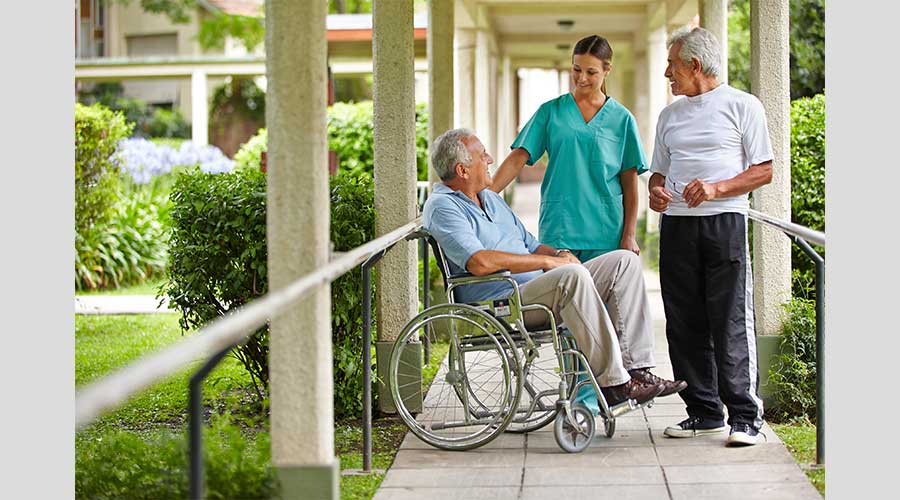Keeping a healthcare facility clean and sterile is important, but that does not mean it must feel cold and uninviting. In fact, the austere look of many hospitals might hinder the healing process.
A growing body of research shows impressive benefits of biophilic design, the incorporation of natural elements into a building’s interior and exterior spaces.
Most impressive is the tie between biophilia and improved patient outcomes, including faster recovery rates, decreased dependency on medication and improved emotional wellness. A study found biophilia reduced hospital stays by one day, which could save $93 million nationwide each year.
“Biophilia reduces stress, and reduced stress contributes to faster healing,” says Dennis J. Kowal, principal at Dennis Kowal Architects. “Since state of mind is an important factor in the healing process, it makes sense to design healing environments to reduce stress as much as possible.”
The benefits also extend to the workforce. Biophilic design lowers stress, reduces absences and turnover, improves job satisfaction and increases focus and productivity, all of which can save employers up to $1,000 per employee per year.
Ideally, a facility includes biophilic design from the start by adding gardens, courtyards and lots of windows throughout the healthcare campus.
It does not take much work or budget for existing buildings to also reap some benefit of biophilia, Kowal says. Incorporating even small elements can improve health outcomes and costs.
“Some fear there is a cost to add these features, but owners, leaders and investors are realizing that healthy buildings increase productivity, reduce absenteeism, and speed healing,” Kowal says.
The most impactful elements are plants, water and natural light. Facility managers can consider adding potted plants, water features and aquariums, as well as reorienting furniture to allow more views outside from inside the building.
The highest priority for these efforts should be patient rooms, followed by communal spaces such as reception areas, waiting rooms, cafeterias and corridors.
While direct exposure to natural elements is most effective, studies have also found measurable health benefits from representations of nature.
Kowal says managers can hang nature-inspired photos or artwork, selecting materials with natural materials such as wood and stone, or patterns such as leaves and flowers, sticking to nature-inspired colors, and choosing furniture with organic rather than geometric shapes.
“In one of our projects, we used a sustainable wall covering that looked and felt like rough sawn wood,” Kowal says. “This provided a tactile and visual reference for the occupant in an otherwise windowless corridor.”
One experiment even revealed that blood donors who watched a wall-mounted television playing a nature video had lower blood pressure and pulse rates than those who did not.
Any effort to make a healthcare facility feel warmer and more natural will better serve its patients, staff and community, not to mention its bottom line.
“It is time to create more healing environments where buildings, through intentional design, participate in the healing process,” Kowal says.
Becky Mollenkamp is a freelance writer based in St. Louis.

 17 Million Patient Records Stolen in PIH Health Ransomware Attack
17 Million Patient Records Stolen in PIH Health Ransomware Attack Holidays are Prime Times for Healthcare Cyberattacks
Holidays are Prime Times for Healthcare Cyberattacks Hartford Healthcare Forms Partnership to Open Health Equity Clinic
Hartford Healthcare Forms Partnership to Open Health Equity Clinic UCHealth Reveals Plans for Memorial Hospital North Expansion
UCHealth Reveals Plans for Memorial Hospital North Expansion What Are 'Hospi-tels'?
What Are 'Hospi-tels'?